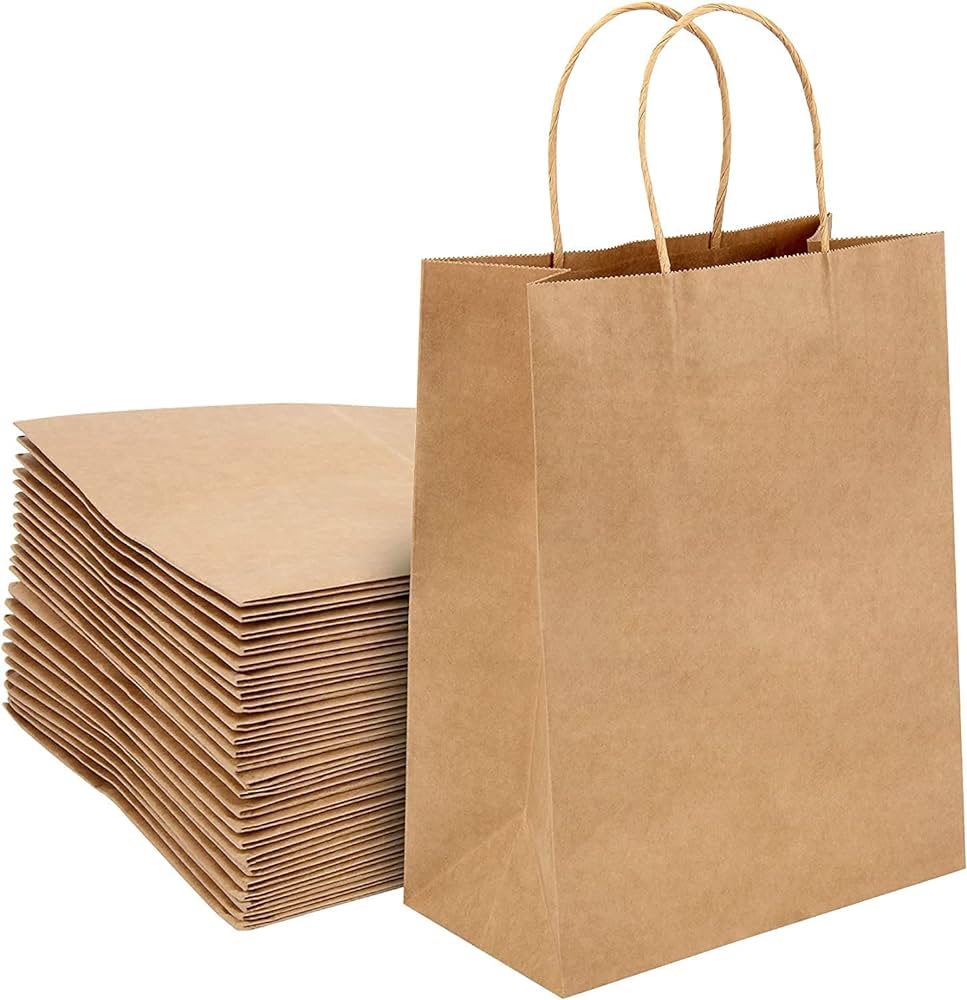However, whether it’s their time, money, or the environment, businesses have a lot to keep in mind when it comes to packaging in modern times when environmental concerns and sustainability become increasingly popular. Bags are a representation of the packaging sector and they can be brown paper bags, white paper bags, and hot cup sleeves. All of them have a special value in this multidisciplinary approach. This article shall present the competitive advantages of the choices of packaging which in turn will be followed with information on their consumer appeal, flexibilities, brown paper bags suppliers and their impact on the environment.
Eco-Friendly Alternative: Brown-coloured Paper Bags
Taking this into account, they now can challenge plastic bags in this way because they are environmentally friendly. The use of biodegradable and recyclable bags by companies is not only a great option for environmentally conscious businesses as these bags are obtained from recycled paper or renewable resources like Kraft paper or other natural add-ons. The fabrics and their qualities are more interesting to environment-friendly customers as natural and organic lines are usually associated with the colours brown which signify this kind of image.
Recyclable paper bags are similar in this factor because they are equally durable and can take the weight of objects without then tearing. If a product breaks during the shipping process, this can damage the company’s reputation, as it might seem that the product is of low quality. This is not the case. To ensure that the products survive transportation safely, durability is needed.
The Most Multi-Purpose Trait of White Paper Bags:
Paper bags could be folded to a desired shape readily so that the end user would be able to use the bag as a trash bin. Brown paper bags are one of the examples of simple sophistication because of their rustic appearance. With their well-polished design and presentation, these bags are usually the go-to for heavy-traffic areas such as high-end stores and boutiques.
White paper bag customization is a major benefit as it offers you an opportunity to create your signature paper bag that is easily recognizable, and stands out from the rest. This is the canvas for branding where they can print their motto, logo, and promotional message exactly. The effectiveness of this method surely attracts more customers who will become familiar with the brand through repeated (recognition). Therefore, it is a unique and powerful means of marketing.
To meet a range of packaging demands, white paper bags are also available in a variety of sizes and patterns. White paper bags are a flexible and useful option that is favoured by several businesses, regardless of the size of the bag—from tiny gift bags to spacious shopping totes.
Warm Handle Sleeves: Safeguarding Hands, Advertising Brands
The coffee and beverage business relies heavily on sleeves for hot cups in this age of grab-and-go lifestyle. These sleeves accomplish two main goals: they shield hands from hot liquids and act as a platform for branding. They are usually composed of corrugated paperboard or recyclable materials.
Hot cup sleeves also improve the drinking experience by protecting hands from burns or pain when drinking hot tea or coffee that has just been made. On-the-go customers who value efficiency and convenience in particular like this useful feature.
Hot cup sleeves also offer coffee businesses and cafés a great chance to Start a business in Uruguay. Businesses may customise every cup to become a marketing tool by printing their logos, slogans, or even QR codes for special offers. This will increase consumer interaction and brand visibility.
Comparative Evaluation: Impact on the Environment
Brown paper bags are superior to white paper bags and hot cup sleeves in terms of their environmental effect. Brown paper bags are less harmful to the environment and help lower waste and carbon emissions since they are created from sustainable or recycled resources.
Rather counterintuitively, although bleachable and hue sheets are recyclable, bleaching them to get a perfect finish may entail adverse environmental consequences. The other thing to consider is toxic waste, a substance that could be accidentally released by the wrongful touching of the ink.
However, hot cup sleeves, which are usually recyclable as well when they are being used with disposable cups, make no difference in the whole amount of waste produced by single-use packaging recycling the sleeves only. Despite people doing their best to create compostable and biodegradable substitutes to combat the hot cup sleeves’ issues, negative environmental effects are still a problem to sort out.
Client Aspects and Current Trends in the Industry:
The very fact that packaging material is determined by the sort of items that consumers want to buy is one of the reasons for its continuous use. Unlike brown paper bags, usually cherished by ecologically conscious consumers, white paper bags can appeal to some shoppers who care about the visual effect, while hot cup sleeves may reduce the unpleasant burning of your fingers, so you can take a sip right away.
Novelty and Upcoming Patterns:
Innovation in packaging materials is anticipated to persist as consumer preferences continue to shift and sustainability remains a top priority on international agendas. To reduce environmental impact while preserving functionality and affordability, researchers and white paper bags manufacturers are investigating substitute materials and production techniques.
Conclusion:
To summarise, there are unique benefits and varied uses for brown paper bags, white paper bags, and hot cup sleeves in the packaging sector. Although white paper bags are more adaptable and provide more branding options, brown paper bags are distinguished by their strong and sustainable nature. For coffee cafes and beverage companies, hot cup sleeves offer practical advantages as well as powerful marketing collateral.
Packaging material selection ultimately comes down to several criteria, such as customer preferences, branding goals, market trends, and environmental considerations. Businesses may make well-informed judgements that match their beliefs and objectives with the demands of their clientele by carefully weighing these variables and comprehending the distinct benefits of each packaging option.





